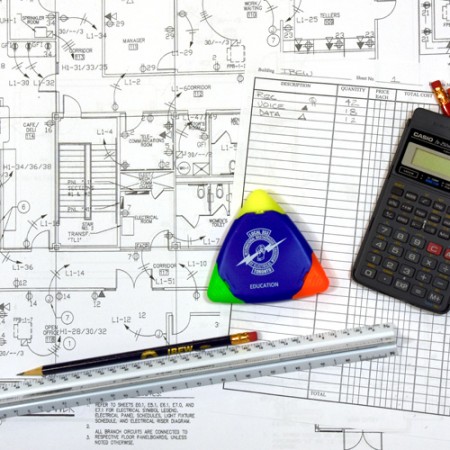Efficient CE Estimating Brunswick: Satisfying All Your Electrical Estimation Requirements
Efficient CE Estimating Brunswick: Satisfying All Your Electrical Estimation Requirements
Blog Article
A Comprehensive Guide to Electrical Approximating Methods for Building And Construction Professionals
In the world of construction jobs, precise electrical estimating is a cornerstone for success. The capacity to forecast prices properly can make a considerable difference in the outcome of a project, both in terms of budget plan adherence and earnings. As building professionals navigate the complexities of electric estimating, they come across challenges that need a blend of industry understanding, logical skills, and critical thinking. By checking out the nuances of estimating strategies customized particularly to electric projects, experts can improve their ability to bid competitively and protect effective outcomes.
Comprehending Electrical Task Extent

Secret facets of comprehending the task scope consist of assessing the building and engineering drawings, specifications, and any other pertinent documentation. This analysis assists in determining the precise area of electric parts, tons demands, voltage requirements, and conformity with building regulations and regulations - CE Estimating Melbourne. In addition, recognizing the project extent allows building specialists to anticipate potential challenges or discrepancies that might occur during the setup process and develop backup plans to resolve them effectively.
Essentially, a clear understanding of the electric project extent acts as the structure for precise expense estimate, resource appropriation, scheduling, and general job administration, eventually resulting in the effective conclusion of electrical installations within spending plan and timeline restraints.

Studying Material Costs
Efficient project administration in electric installations necessitates a careful analysis of material expenses to ensure ideal resource utilization and spending plan adherence. Assessing product expenses involves a comprehensive exam of the expenditures associated with the electrical parts needed for a project.
In addition, conducting a detailed evaluation of product prices makes it possible for project managers to determine possible cost-saving possibilities. By contrasting rates from various suppliers and discovering alternate materials or resources, building and construction professionals can optimize their purchase methods and lessen expenses. Additionally, assessing product expenses aids in creating a realistic spending plan and staying clear of unforeseen financial setbacks during the job execution stage. On the whole, a detailed understanding of material costs is crucial for successful task planning and implementation in the electrical construction industry.
Estimating Labor Expenditures
To properly project prices in electrical construction projects, approximating labor costs is an essential aspect that calls for precise focus and careful factor to consider (CE Estimating Brunswick). When estimating labor expenditures, it is necessary to consider aspects such as the number of electrical contractors required, their skill level, the duration of the job, and any kind of prospective overtime prices.
Teaming up with project managers and electrical experts throughout the estimation process can assist confirm labor estimates and make certain an extensive understanding of the task's labor needs. By accurately approximating labor costs, building and construction professionals can improve price management and project success.
Using Estimating Software Application Tools
Utilizing specialized approximating software program devices can dramatically streamline the process of determining labor expenses in electrical construction projects. These devices supply numerous attributes that boost precision and effectiveness in estimating. One essential benefit of using approximating software program is the capability to produce comprehensive and customized price quotes swiftly. By inputting project-specific info such as labor rates, material expenses, and job timelines, these devices can create accurate estimates visit this page in a portion of the time it would certainly take to do manually.
Additionally, approximating software application can aid track modifications and updates in go to this website real-time, making certain that estimates mirror one of the most present details. This can be especially valuable in dynamic building environments where job details may transform frequently. Several approximating software application tools offer integration with various other task monitoring software, permitting for smooth sychronisation between scheduling, estimating, and budgeting processes.
Implementing Danger and Backup Factors
Integrating risk and backup elements is necessary in electric estimating for building and construction projects to represent unpredicted scenarios and make certain financial readiness. Risks in electrical estimating can emerge from different resources such as worldly price fluctuations, labor scarcities, design modifications, or unforeseen site problems. To properly handle these dangers, building and construction specialists need to carry out a thorough danger analysis at the start of the estimating process. This evaluation entails identifying potential risks, evaluating their prospective effect on the project, and developing mitigation strategies to address them.
It is suggested to allot a practical percent of the task cost as a contingency to make sure economic security throughout the task. By incorporating risk and contingency factors into the estimating procedure, construction professionals can enhance the precision of their price quotes, decrease economic shocks, and improve general project monitoring.
Final Thought
To conclude, grasping electrical estimating techniques is crucial for building and construction specialists to precisely budget plan and plan for tasks. By recognizing job scope, assessing material prices, estimating labor costs, utilizing software program tools, and implementing risk and backup elements, professionals can make certain the success of their jobs. It is crucial to constantly refine approximating skills and stay upgraded on industry patterns to remain competitive in the construction market.
To properly forecast prices in electric building tasks, estimating labor costs is a vital facet that requires thorough attention and cautious factor to consider. Working together with task supervisors and electrical contractors my review here throughout the evaluation procedure can help confirm labor estimates and make certain an extensive understanding of the task's labor requirements.Utilizing specialized estimating software program devices can substantially streamline the process of computing labor costs in electric building and construction projects. It is recommended to designate a practical portion of the project cost as a contingency to ensure economic security throughout the task. By comprehending project scope, analyzing product costs, estimating labor expenditures, utilizing software program devices, and applying danger and backup elements, professionals can make certain the success of their projects.
Report this page